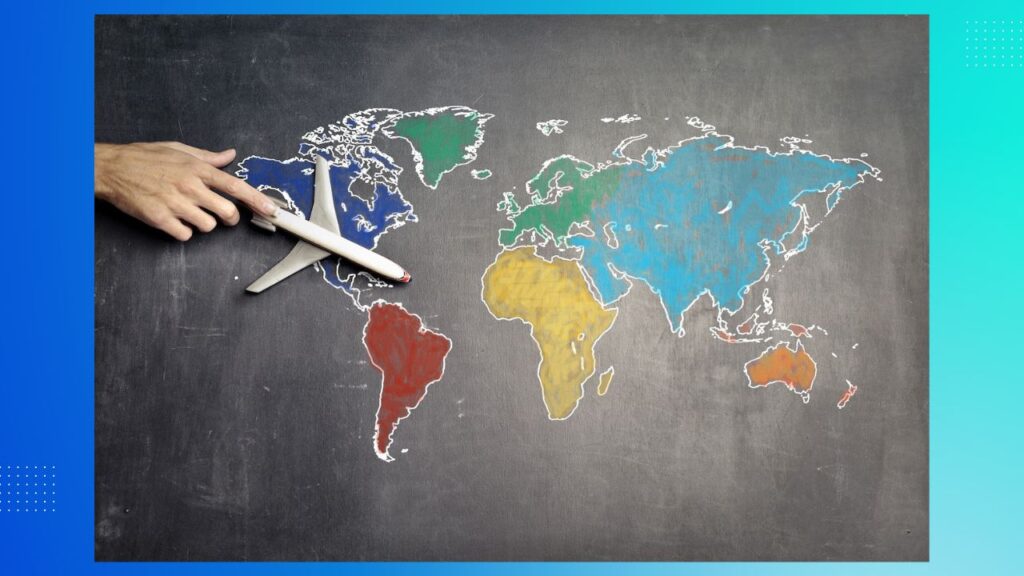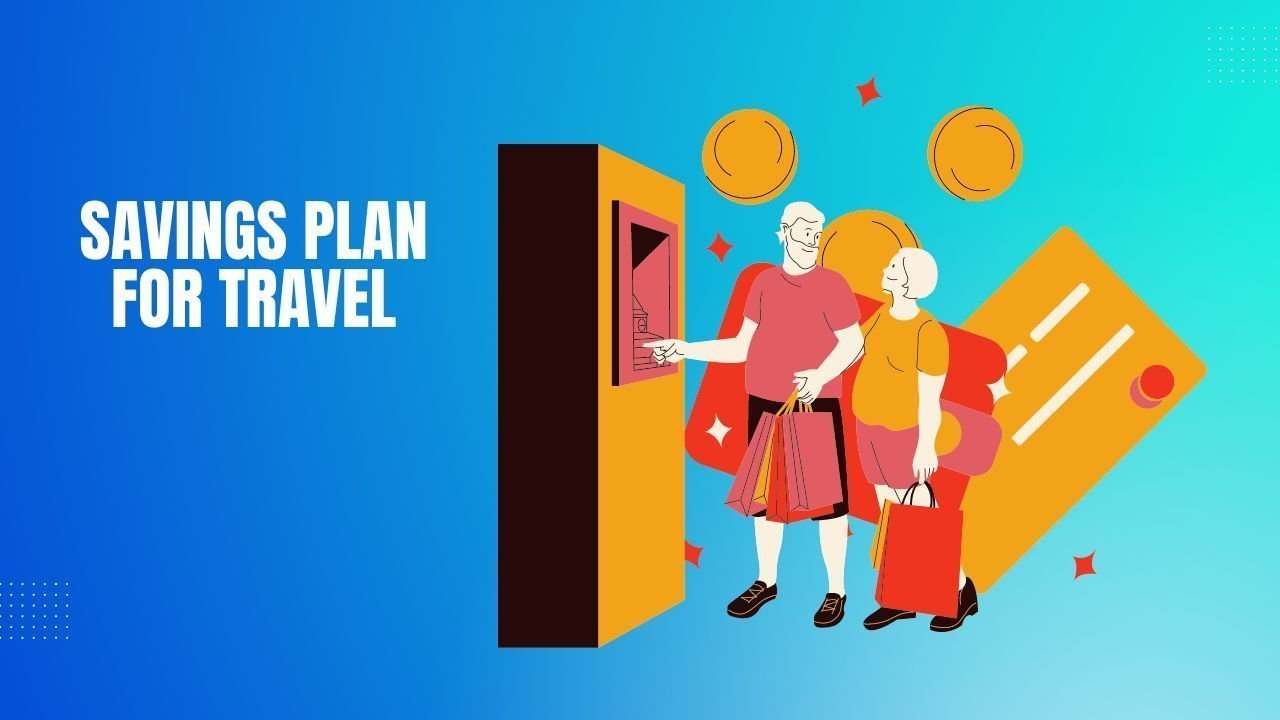Are you dreaming of traveling the world, trying new experiences, and making unforgettable memories? Well, you’re not alone!
According to a study by Airbnb, millennials are prioritizing experiences over material possessions, with 72% of us preferring to spend our money on experiences like travel, concerts, and events.
But, let’s be real, travel and experiences can be expensive. The last thing you want is to come back from your dream trip and find yourself drowning in debt.
That’s why having a savings plan is crucial.
In this article, we’ll guide you through the process of creating a savings plan for travel and experiences that are tailored to your financial situation.
We’ll cover everything from assessing your current financial situation to setting a realistic travel and experience goal, creating a budget, building a savings plan, and sticking to it.
So, grab your favorite drink, get comfy, and let’s get started on creating a plan that will help you travel the world and experience new things without breaking the bank.
1. Assessing Your Current Financial Situation
Assessing your current financial situation is the first step in creating a savings plan for travel and experiences.
This step will help you understand your income, expenses, and debt, and give you a clearer picture of your financial standing.
1.1 Understanding your income
To assess your income, you need to determine your total income and your net income.
Your total income is the amount of money you earn before taxes and other deductions, while your net income is the amount of money you take home after taxes and other deductions.
Here are some ways to determine your income:
- Look at your paycheck: This will give you a clear idea of your net income.
- Review your tax return: This will help you determine your total income.
- Add up all sources of income: This includes any side hustles, freelance work, or other sources of income.
Once you have determined your income, you can move on to assessing your expenses.

1.2 Assessing your expenses
To assess your expenses, you need to determine your fixed expenses and your variable expenses.
Fixed expenses are the expenses that stay the same each month, such as rent, car payments, and insurance.
Variable expenses are expenses that fluctuate from month to month, such as groceries, entertainment, and travel.
Here are some ways to determine your expenses:
- Review your bank and credit card statements: This will help you identify your fixed and variable expenses.
- Use a budgeting app: Budgeting apps like Mint, YNAB, and Personal Capital can help you track your expenses and categorize them.
- Make a list: Make a list of all your expenses and categorize them as fixed or variable.
Once you have determined your expenses, you can move on to analyzing your debt.
1.3 Analyzing your debt
To analyze your debt, you need to determine how much debt you have, what type of debt it is, and what the interest rates are.
Here are some ways to analyze your debt:
- Review your credit report: Your credit report will show you all your debts, including credit cards, student loans, and personal loans.
- Make a list: Make a list of all your debts, including the balance, the interest rate, and the monthly payment.
- Use a debt calculator: Debt calculators can help you determine how long it will take to pay off your debt and how much interest you will pay.
Once you have assessed your income, expenses, and debt, you will have a clearer picture of your financial situation.
This will help you determine how much you can realistically save each month towards your travel and experience goals.
2. Setting A Travel And Experience Goal
Once you have assessed your current financial situation, the next step is to set a travel and experience goal.
This goal will help you stay motivated and focused on saving for your dream trip and experiences.
2.1 How to determine where you want to go and what experiences you want to have
Before you can set a travel and experience goal, you need to determine where you want to go and what experiences you want to have.
This can be a fun and exciting process, but it’s important to be realistic about what you can afford.
Here are some tips for determining your travel and experience goals:
- Make a list of your dream destinations: This will help you narrow down your options and focus on where you want to go.
- Research the cost of travel and experiences: Use online resources like TripAdvisor and Expedia to get an idea of how much it will cost to travel to your desired destination and participate in the experiences you want to have.
- Prioritize your goals: Decide which experiences are most important to you and prioritize them in your travel and experience goal.

2.2 How to set a realistic travel and experience goal based on your financial situation
Once you have determined where you want to go and what experiences you want to have, the next step is to set a realistic travel and experience goal based on your financial situation.
This goal should be specific, measurable, achievable, relevant, and time-bound.
Here are some tips for setting a realistic travel and experience goal:
- Determine the total cost: Calculate the total cost of your trip and experiences, including transportation, accommodations, food, activities, and souvenirs.
- Break it down into smaller goals: Break the total cost down into smaller goals, such as saving a certain amount each month.
- Be realistic: Make sure your goal is achievable based on your current financial situation. Don’t set a goal that requires you to save more than you can realistically afford.
- Set a deadline: Give yourself a specific deadline for achieving your travel and experience goal. This will help you stay motivated and focused.
Setting a travel and experience goal is an important step in creating a savings plan for travel and experiences.
It will help you stay on track and motivated as you work towards your dream trip and experiences.
3. Creating A Budget
Creating a budget is a crucial part of any savings plan, including a savings plan for travel and experiences.
It will help you track your spending and ensure that you are saving enough money to achieve your travel and experience goals.
3.1 How to create a budget for your travel and experience goal
To create a budget for your travel and experience goal, you’ll need to first determine how much money you need to save each month.
This will depend on the total cost of your trip and experiences, as well as your deadline for achieving your goal.
Here are some tips for creating a budget for your travel and experience goal:
- Use a budgeting app: There are many budgeting apps available, such as Mint and YNAB, that can help you create and track your budget.
- Use a spreadsheet: You can also create a budget using a spreadsheet, such as Google Sheets or Microsoft Excel.
- Break it down by category: Divide your budget into categories, such as transportation, accommodations, food, activities, and souvenirs.
- Be realistic: Make sure your budget is realistic based on your current financial situation. Don’t set a budget that requires you to save more than you can realistically afford.

3.2 How to incorporate your regular expenses into your budget
In addition to your travel and experience expenses, you’ll also need to incorporate your regular expenses into your budget.
These expenses include things like rent, utilities, groceries, and transportation.
Here are some tips for incorporating your regular expenses into your budget:
- Track your spending: Keep track of your spending for a few months to get an idea of how much you typically spend on each category.
- Prioritize your expenses: Prioritize your regular expenses based on their importance and allocate funds accordingly.
- Leave room for unexpected expenses: Be sure to leave some wiggle room in your budget for unexpected expenses, such as car repairs or medical bills.
3.3 Tips for saving money on regular expenses to free up funds for your travel and experience goal
One of the best ways to free up funds for your travel and experience goal is to save money on your regular expenses.
Here are some tips for doing so:
- Cook at home: Eating out can be expensive. Try cooking at home more often to save money on food.
- Use public transportation: If you live in an area with good public transportation, consider using it instead of owning a car.
- Shop around for utilities: You may be able to save money on your utility bills by shopping around for the best rates.
- Cut back on subscriptions: Consider canceling subscriptions to services you don’t use often, such as cable TV or a gym membership.
By incorporating your regular expenses into your budget and finding ways to save money on them, you can free up funds to put toward your travel and experience goal.
4. Building a savings plan
Once you have created a budget, the next step is to build a savings plan that will help you achieve your travel and experience goal.
Here are some tips for building a savings plan:
4.1 How to determine how much money you need to save each month to reach your goal
To determine how much money you need to save each month to reach your travel and experience goal, you’ll need to consider the total cost of your trip and experiences, as well as your deadline for achieving your goal.
Here are some tips for determining how much money you need to save each month:
- Break it down: Divide the total cost of your trip and experiences by the number of months until your deadline. This will give you an idea of how much you need to save each month.
- Consider interest: If you are planning to save in a high-yield savings account, consider the interest you’ll earn on your savings as well.

4.2 Strategies for saving money, including cutting expenses and increasing income
There are many strategies you can use to save money, including cutting expenses and increasing your income.
Here are some tips:
- Cut expenses: Look for ways to cut expenses in your budget, such as by eating out less or shopping around for better rates on utilities.
- Increase income: Consider taking on a side hustle or selling items you no longer need to increase your income.
4.3 How to automate your savings plan for better results
One of the best ways to stick to your savings plan is to automate your savings.
This means setting up automatic transfers from your checking account to your savings account each month.
Here are some tips for automating your savings plan:
- Set up automatic transfers: Set up automatic transfers from your checking account to your savings account each month.
- Increase the transfer amount: As you find ways to cut expenses or increase your income, consider increasing the amount you transfer each month.
- Use a separate savings account: Consider using a separate savings account for your travel and experience savings. This will help you keep track of your progress toward your goal.
By building a savings plan that takes into account the total cost of your trip and experiences, strategies for saving money, and automating your savings, you can set yourself up for success in achieving your travel and experience goal.
5. Sticking to your plan
Now that you have created a savings plan, the next step is to stick to it.
Here are some tips for staying motivated and committed to your savings plan:
5.1 How to stay motivated and committed to your savings plan
- Keep your goal in mind: Remind yourself of your travel and experience goal often to stay motivated.
- Track your progress: Keep track of your savings progress towards your goal, whether it’s in a spreadsheet or a separate savings account.
- Celebrate small milestones: Celebrate each small milestone along the way, such as reaching a certain percentage of your goal or saving a certain amount of money.

5.2 Tips for staying on track and avoiding temptations
- Avoid impulse purchases: Think twice before making any purchases that aren’t necessary and will take away from your travel and experience goal.
- Plan your spending: Plan your spending to avoid any surprises that may derail your savings plan.
- Surround yourself with supportive people: Surround yourself with people who will support your savings plan and encourage you to stick to it.
5.3 How to adjust your plan if necessary
Sometimes, unexpected expenses or changes in your financial situation may require you to adjust your savings plan. Here are some tips for adjusting your plan if necessary:
- Re-evaluate your goal: If your goal is no longer realistic, consider adjusting it to something more attainable.
- Revisit your budget: Revisit your budget to see where you can make adjustments to accommodate unexpected expenses or changes in income.
- Don’t give up: Don’t give up on your savings plan altogether if you need to make adjustments. Remember, any progress toward your goal is better than none.
By staying motivated and committed to your savings plan, avoiding temptations, and adjusting your plan if necessary, you can successfully achieve your travel and experience goal.
Remember, the key to success is to stay focused on your goal and take small steps toward it every day.
Bottom Line…
In conclusion, creating a savings plan for travel and experiences can seem daunting, but with the right mindset, tools, and strategies, it is achievable.
By assessing your current financial situation, setting a realistic travel and experience goal, creating a budget, building a savings plan, and sticking to your plan, you can successfully save for your dream trip or experience.
Remember, saving money is not just about cutting back on expenses, it’s also about making smart choices and finding ways to increase your income.
According to a recent study by Bankrate, millennials prioritize experiences over material possessions and are willing to save more for experiences like travel.
This shows that creating a savings plan for travel and experiences is not only smart financial planning but also aligns with the values of many millennials.
By implementing the strategies outlined in this article and staying committed to your savings plan, you can achieve your travel and experience goals and create unforgettable memories.
So start planning, budgeting, and saving today, and you’ll be on your way to experiencing the world in no time.

3 thoughts on “How To Create A Savings Plan For Travel And Experiences”